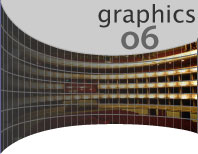
|
|
Hot3D
High-Speed
Distributed Rendering in the HoloVizio System
›
Péter Tamás Kovács, Holografika
Abstract:
We present the HoloVizio system design and give an overview about
Holografika's approach to the 3D displaying. The patented HoloVizio
technology uses a specially arranged array of optical modules and a
holographic screen. Each point of the holographic screen emits light
beams of different color and intensity to the various directions. The
light beams generated in the optical modules hit the screen points in
various angles and the holographic screen makes the necessary optical
transformation to compose these beams into a perfectly continuous 3D
view. With proper software control, light beams leaving the pixels
propagate in multiple directions, as if they were emitted from the
points of 3D objects at fixed spatial locations. We show that the
direction selective light emission is a general requirement for every
3D systems and provide quantitative data on the FOV, on the angular
resolution, determining field of depth of the displays, affecting the
total number of light beams necessary for high-end 3D displaying. We
present the results with the 10 Mpixel desktop display and the 50
Mpixel large-scale system. The large-scale system uses a rendering
cluster consisting of nodes each having multiple 3D graphics boards
driving the optical modules. We discuss the choices made during the
design of this architecture, as well as the desired
“ideal” graphics system for this purpose. We cover the
real-time control issues at high pixel-count systems with the
HoloVizio software environment and describe concrete 3D applications
developed in the frame of European projects.
This is joint work with Tibor Balogh, Tamás Forgács,
Eric Nivel, and Attila Barsi.
The NVIDIA Quadro Plex Visual Computing System
› Mark Harris, Ian Williams, NVIDIA
Abstract:
NVIDIA Quadro Plex 1000 is a new external dedicated visual
computing system that irepresents a 20x leap in visual compute density
— graphics computation per cubic inch. Its compact, ultra-quiet
design can be quickly deployed in any desktop workspace or can be
easily transformed to fit into any standard 19” rack
environment. Utilized as a single VCS node (two NVIDIA Quadro Plex
VCSs connected to a single certified SLI-capable system) up to eight
GPUs can be deployed in 3U of rack space to deliver the power and
capability required by even the most demanding applications. This
presentation will introduce Quadro Plex and discuss technical
specifications and capabilities as well as applications.
A Performance-Oriented Data Parallel
Virtual Machine for GPUs
› Derek Gerstmann, ATI
Abstract:
Existing GPU programming interfaces require that applications
employ a graphics-centric programming model exported by a device
driver tuned for real-time graphics and games. This programming model
impedes development of non-graphics applications by hiding hardware
resources behind its graphics-oriented interface. We present an
abstraction for GPUs that provides policy-free, low-level access to
the hardware and is designed for high-performance, data-parallel
applications.
| |
|



